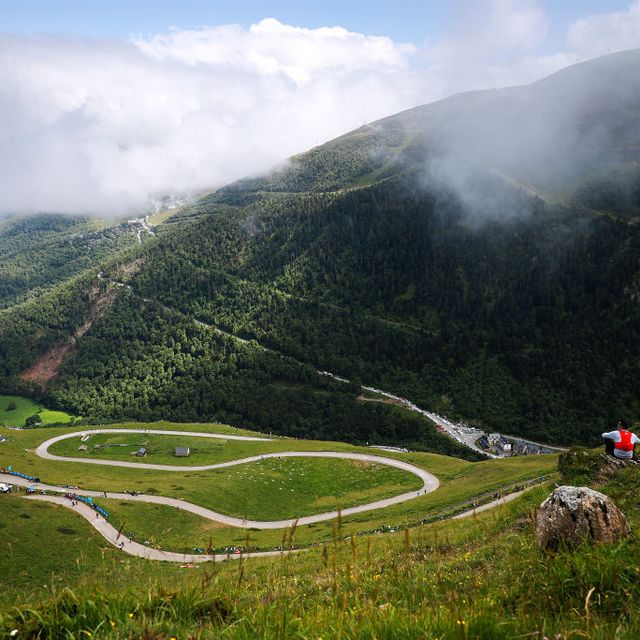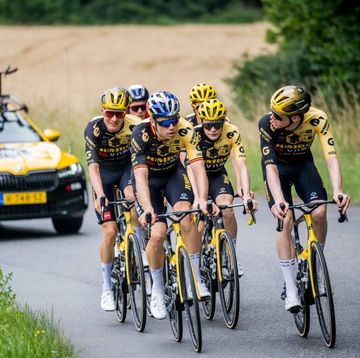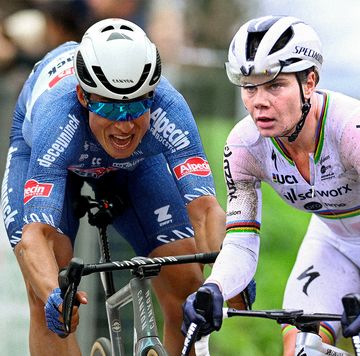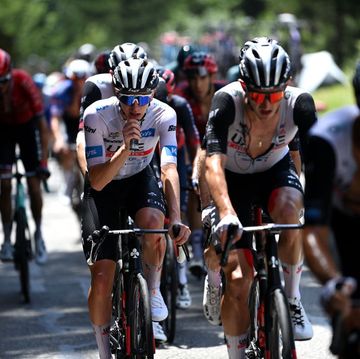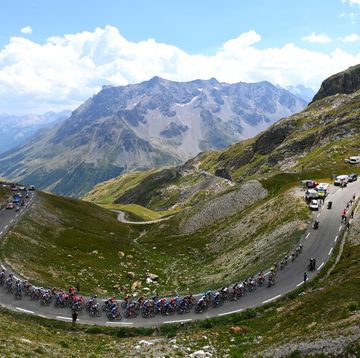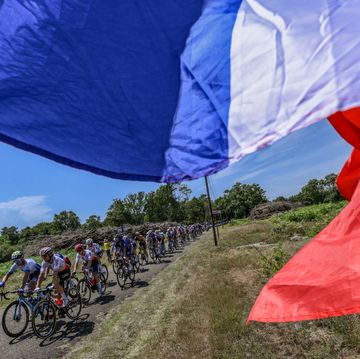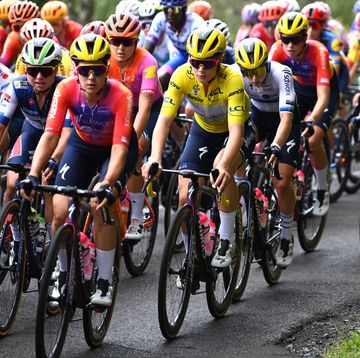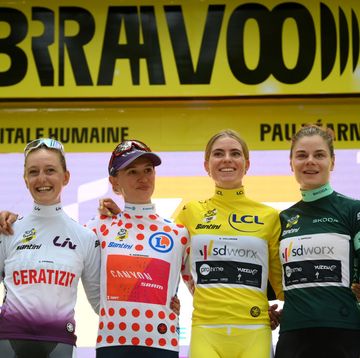The scenery along the Tour de France is nonstop jaw-dropping. From the staggering cliffs of the Pyrenees mountains to the ancient streets of Bordeaux on the Garonne River, the route does not lack incredible sights.
But have you ever wondered what’s going on underneath it all? What scientifically makes France and much of Europe so stunning? You’re in luck! There’s a whole team of people ready to explain it all
Dutch geologist and life-long cycling fan Douwe van Hinsbergen launched an entire website and Twitter account dedicated to answering all the questions you might have about the earth's physical structure, substance, and history along both the men’s and women’s Tour de France routes.
On the website, he says, “Geoscientists tend to love the outdoors. They are a talkative bunch who can’t stop explaining about their rocks, fossils, landscapes, natural processes and the field expeditions they undertook.”
“Normally, stages have a few hours in which little happens and commentators are filling the time with information about everything and nothing, but never geology,” Van Hinsbergen told Bicycling in an email. “I saw an opportunity: every stage presents an hours-long geological excursion. The only thing I had to do was to explain what you see on your screen.”
“So I started writing short blogs with some information two years ago, sent them to Dutch TV, and posted them on my website.” The posts were well-received and passed around. “So last year I launched @GeoTdF on Twitter and built a dedicated website. I wrote half the blogs myself and invited friends to write the other half, and raised some media awareness.”
Because of the appeal, this year Van Hinsbergen decided to step up the game again. “I won a grant to support the project, and 30 scientists from 12 countries and 4 continents wrote blogs.”
Van Hinsbergen also hired cycling commentator José Been as an editor to make the posts more understandable to a wide audience. They created 13 clips that are being used by both Dutch and English TV stations during the live stages.
The goal is to tell the public all about what made the scenery riders maneuver in the tour. For instance, the site tells all about the Pyrenees for stage 5, “the mountains were formed 65 million years ago when the Iberian plate collided with the Eurasian plate and formed a long mountain chain at the boundary. Mountains such as the Pyrenees are mainly made of crustal rocks. These form a thin top layer of a few tens of kilometers thick at the Earth’s surface which we call the crust.”
For Van Hinsbergen, it’s been both a learning experience and a lot of fun. One of his favorite parts has been the challenge of finding something interesting to write about on Twitter for cycling races all over the world – not just the tour. “I’m learning a lot,” he said. “And there’s so much interesting stuff in the subsurface of France. There are plenty of still unwritten stories!”

Micah Ling is a freelance writer who lives in the mountains of Colorado. She splits her free time between mountain biking and trail running.
